LANDSCAPE
Tour area gardens on the Petals & Pathways Tour on May 3. Page 2

TRAVEL
A Wes Andersoninspired home was at a modern art museum in Portugal. Page 11

WILDLIFE
Take a walk on the wild side in the Angeles National Forest. Page 14


















LANDSCAPE
Tour area gardens on the Petals & Pathways Tour on May 3. Page 2

A Wes Andersoninspired home was at a modern art museum in Portugal. Page 11

Take a walk on the wild side in the Angeles National Forest. Page 14

















By Helene Seifer
May 3, from noon to 4 p.m.
The self-guided tour of five magnificent home gardens is presented by the Windsor Square-Hancock Park His-

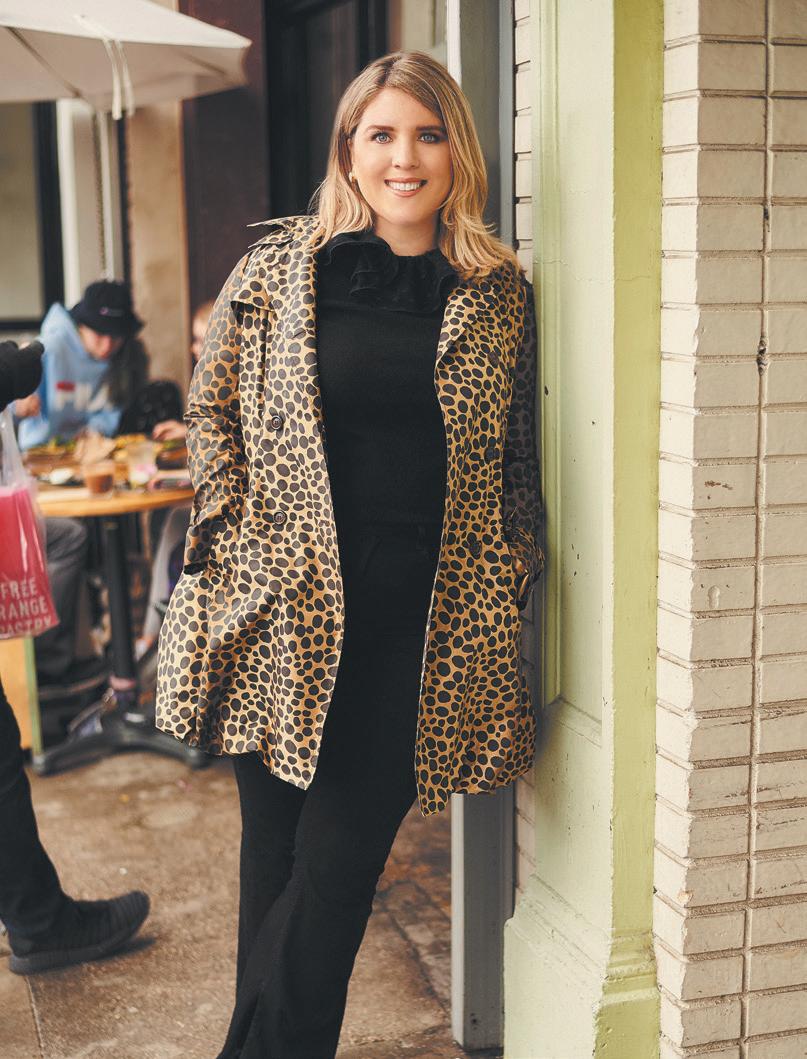
torical Society (WSHPHS) and the Institute of Classical Architecture and Art (ICAA). WSHPHS Vice President of Events Richard Battaglia notes that this is the first time they are collaborating with another organization, stating, “We are hoping it brings lots of new attendees for the garden tour as well as to the home tour in November.
“We have two gardens on Wilton Drive in the Wilton-Ridgewood Historic District,” Battaglia tells us. Both are designed by landscape artist Sarah Alexander of Rodriguez & Satterthwaite, who will be available to answer questions.
The first, a peaceful property belonging to Sarah Byrum and Dana Jackson, fits the description “Urban Oasis.”
The second, owned by Alysoun and Al Higgins, has been christened “Ladies of the Canyon” by WSHPHS. The 1911 Craftsman home features drought-tolerant and native plants and a backyard designed for entertaining with a pizza oven, several distinct seating areas, a chicken coop and the surprise appearance of a 1978 white and yellow Volkswagen Beetle convertible peeking out of their garage. Visitors may also meet

one of the guide dogs the couple raises.
Heather and John Fogarty’s 1920 French Normandy Revival home, designed by architects Walker & Eisen, has unusual drought-tolerant landscaping done in the style of an English garden. Designed by Cheryl Kellough, the property also features a scent and sunrise garden, where flowers dazzle with the colors of the early morning sky. Jasmine, roses, honeysuckle and wisteria were selected with fragrance in mind.
A regal oak-lined front yard pathway and a stagger-
(Please turn to Page 3)






SOLD: This home at 123 S. Irving Blvd. in Windsor Square sold for $6.95 million in March.
5225 W. Second St.
72 Fremont Pl.
123 S. Irving Blvd.
96 Fremont Pl.
359 S. Sycamore Ave.
400 N. Mansfield Ave.
(Continued from Page 2)
ing variety of greenery will greet visitors to Leah and Sam Fischer’s Georgian-style home in Windsor Square. Landscape designer Patricia Brenner divided the property into distinct outside rooms, including a fire pit area and kitchen room with citrus trees, 100-year-old sycamores and wisteria-laden pergolas. A historic pet cemetery from the 1920s is an interesting garden feature.
Those on the Petals & Pathways Garden Tour will also have the opportunity to tour the magical Rossmore Avenue home garden of Brad Pitt’s favorite landscaper, Jay Griffith.
“You won’t want to miss these,” Battaglia added.

Tickets are $55 for ICAA/ WSHPHS members and $75 for non-members and are available at www.wshphs. com. Maps and prepaid and day-of tickets can be picked

up May 3, starting at noon, at 355 S. Windsor Blvd. Ticket proceeds support planting and improvement projects in the Windsor Square-Hancock Park area.
$7,980,000
$6,950,000
$6,920,500
$4,300,000
$3,925,000
$3,526,820 116 N. Arden Blvd.
$3,400,000 268 S. Van Ness Ave.
611 N. Sierra Bonita Ave.
629 S. Sycamore Ave.
607 N. Sierra Bonita Ave.
800 S. Citrus Ave.
428 N. Plymouth Blvd.
655 S. Sycamore Ave.
323 N. Norton Ave.
959 S. Mullen Ave.
932 Fourth Ave.
610 N. Curson Ave.
507 S. Norton Ave.
116 1/2 N. Sycamore Ave.
645 Wilcox Ave., #3B
531 N. Rossmore Ave., #406
*Sale prices for March.
$3,294,150
$2,600,000
$2,275,000
$2,190,000
$2,150,000
$2,000,000
$1,935,000
$1,850,000
$1,830,000
$1,731,000
$1,500,000
$1,485,000
$1,350,000
$1,100,000
$1,070,000


By Desmond Garvey
Bar Etoile completely encapsulates the essence of the rapid transformation that Melrose Hill has been undergoing for the past year, and some change. At first I had my doubts about the area’s ambitions to mirror Larchmont Boulevard. The absence of any obvious neighborhood identity, and more importantly, lack of parking, led me to believe any attempt to develop the area would ultimately fail. Having been open for the better part of six months now, Bar Etoile stands as a bold contradiction to my original belief.
The hype hasn’t seemed to die down since opening. Getting a reservation on the weekend is nearly impossible, and on weekdays you’ll be faced with the option of a table at 5 p.m. or one at 9:30 p.m.—outside.
The wait staff chuckles with one another and make small talk with patrons as if they’re longtime friends—not servers and guests, but co-conspirators on a leisurely afternoon. There’s ease to the place that feels borrowed straight from a sun-dappled Parisian corner. The south wall is a playful gallery of plates, each with its own design or eccentric

BUTTERMILK POACHED trout rillettes and house chips.
little illustration, like souvenirs from a life well traveled but never hurried. Together these details conspire to give Bar Etoile warmth that feels unmanufactured. It’s the kind of restaurant where the line between diner and regular blurs almost immediately, where you’re gently swept into the rhythm of a place that’s not trying too hard to impress you—because it knows it already has.
The menu is broken down into three sections: small, medium and large. We started with the citrus marinated olives and buttermilk poached trout rillettes with house potato chips. The fish, poached gently in buttermilk until it practically sighs under the weight of your fork, is folded

and Montpellier butter.
into itself with elegance that feels almost accidental. There’s a tang from the buttermilk that lingers, and the whisper of the fresh herbs lets you know that it finally is springtime. It makes you wonder why anyone ever bothered with salmon. From the medium section we got the Caesar beef tartare. This is not your corner steakhouse tartare. Beef tartare, raw and brash, is flecked with pops of anchovy and showered with Parmigiano and lemon zest. It nods to the Caesar without mimicking it. It’s plated atop Bub’s Bread (these days is a hip L.A. restaurant really complete without Bub’s Bread from Bub and Grandma’s in Eagle Rock?), which could have done with a bit more crackle and a little less chew. Together, it’s a dish that’s playful and a nice lateral move away from your traditional beef tartare.

From the large section we opted for the rotisserie chicken with caramel braised bok choy and squash purée. Bar Etoile’s bird, burnished to a lacquered bronze, arrived perfumed with whatever alchemy of fat, skin and slow rotation they’ve mastered in their kitchen. But it’s the accompaniments that make this dish hum at a higher frequency. Bok choy, coaxed into submission with caramel’s bittersweet allure, offers an unexpected complexity—vegetal freshness softened and darkened at the edges. The squash purée, silky and sweet, is the counterpoint and the glue, tying the dish together with autumnal warmth.
Bar Etoile’s steak frites aren’t a reinvention; they’re a love letter. The steak, crusted just so, wears its sear like a
jacket that’s seen many winters—confident, effortless. The Bordelaise sauce, sticky with the depth of good wine and marrow, coats each slice, inviting drag after drag of the accompanying frites, which are textbook in their crispness. But it’s the Montpellier butter, that verdant, garlicky flourish, which turns the dish from reliable to unforgettable. It melts into the meat, herbal and rich. This is bistro food for people who understand that perfection isn’t about invention, it’s about execution.
Bar Etoile isn’t just a restaurant making good on its own promise—it feels like a flag planted in the soil of Melrose Hill’s next chapter. What was once a stretch of street caught somewhere between ambition and anonymity is fast becoming a place with its own gravitational pull. The neighborhood identity remains a work in progress, but maybe that’s part of the charm. Places like Bar Etoile give Melrose Hill the confidence to be something other than a copy of Larchmont—to grow into itself with a certain casual swagger. If this is the blueprint for what’s to come, then my early doubts are long gone.
Bar Etoile, 632 N. Western Ave.
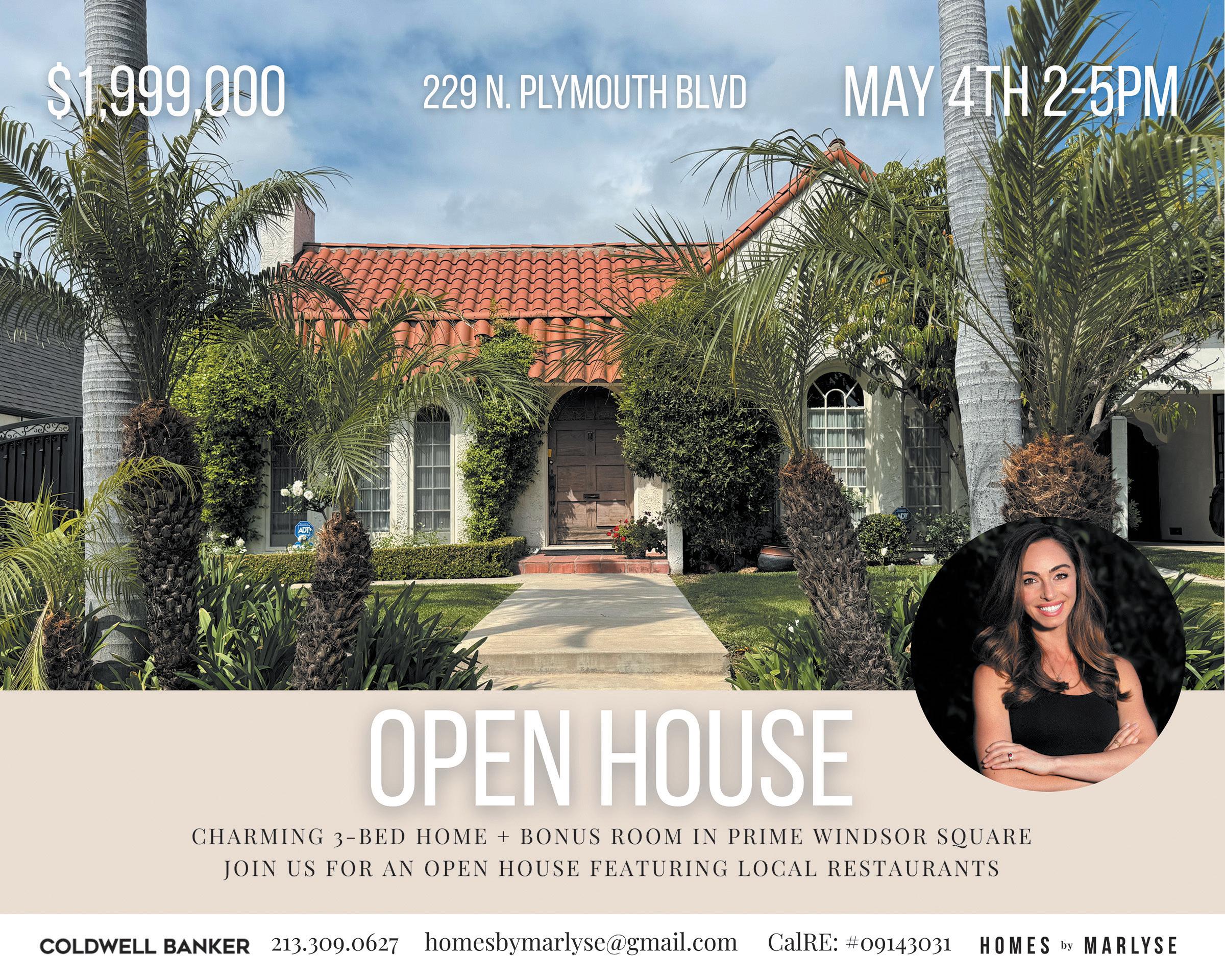

By Bridget Smith
I was way, way past 21 when I finally learned to appreciate a martini. For years, I thought they were downright awful, but one day, something just clicked. Now they feel special, like a celebratory toast to a night out on the town. I know everyone has their own preferences when it comes to martinis, and I won’t bore you with mine. But what I will share are my favorite places to enjoy a martini near Larchmont.
Rao’s Hollywood
I love this place, even if it sometimes feels like a movie set, and maybe the staff are paid actors hired to transport you to the East Coast for an evening. (If so, I’m not mad at them for it.) Their Black & Blue Goose martini is absolute perfection, and bartender Catherine always gets it right.
Rao’s, 1006 Seward St.
La Bettola di Terroni
This is my go-to neighborhood spot, where I first realized that a lemon twist is the perfect complement
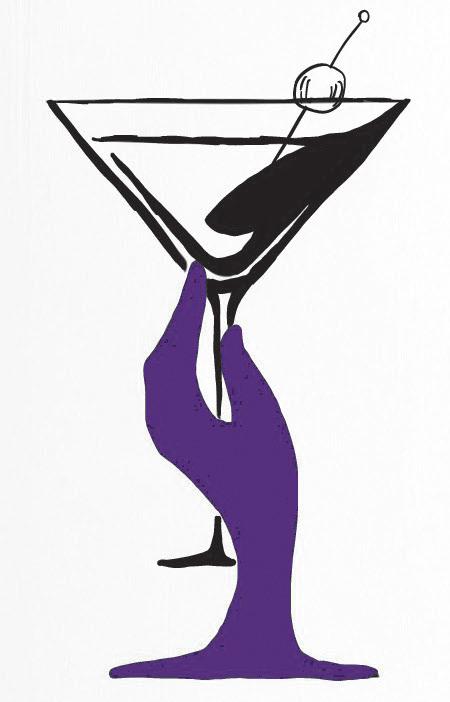
to a gin martini—though I remain firmly on team vodka. Bartender Seth fits the local vibe so well, I want him to be one of my new best friends.
La Bettola di Terroni, 225 N. Larchmont Blvd.
Taylor’s Steakhouse Want to make me happy? Suggest a trip to Taylor’s, any day of the week. It’s not even about the classic steakhouse
3

$2,200,000
Great opportunity to be on “Little Bronson” Ready to Move in!
By Appointment Only
menu—it’s about the atmosphere of dark red leather booths. This is where I first fell for martinis, and Taylor’s approach imprinted on me. Luis behind the bar makes them flawlessly every time. Taylor’s Steakhouse, 3361 W. 8th St.
The Smoke House
A bit of a schlep, sure, but well worth it for the oldschool charm and martinis made just how I like them. Bonus: they serve that little extra pour in a carafe, making you feel like a VIP. If you’re lucky, Gary will be behind the bar, regaling you with tales from his days working with Johnny Carson. The Smoke House, 4420 Lakeside Dr. Love Hour
The bartenders here makes you feel like a regular, even if you’re not. For a moment you’re transported into an alternate universe where you’re hip enough to hang in K-Town. As a hip dive bar, the burgers have to be ordered outside, but they bring them to you and your martini.




ADVENTEROUS MARTINEZ
Their martinis? Excellent. Their smash burger? The best I’ve ever had. Love Hour, 532
S. Western Ave. Musso & Frank Grill
The OG! The historic ambiance alone should make this a top pick, but I can never get to the perpetually crowded bar, and that takes away from the illusion I like to have accompanying my martinis—that somehow I am an integral part of the scene. Musso & Frank Grill, 6667 Hollywood Blvd. Craig’s
I’ve actually managed to get a spot at the bar here, but only because I show up ridiculously early. It’s a place to see and be seen, with dark blue leather booths and white tablecloths. Love this place— and not just for the martinis. Craig’s, 8826 Melrose Ave. La Dolce Vita
It’s all about the vibe here.
It’s so dark you can barely see when you walk in. It was formerly owned by Frank Sinatra and it still feels it. Their martinis veer from the classics and I always get swept up in the atmosphere, finding myself ordering one of their creative renditions such as Third Marriage, a mix of vodka, pear eau de vie and Coccchi Americano. La Dolce Vita, 9785 S. Santa Monica Blvd., Beverly Hills.
The Benjamin Hollywood A total gem! You know it’s new, but it feels old, and that just feels right. It has it all— great interior, great martinis and a truly great burger— plus you can actually get a seat at the bar. The only reason it’s not at the top of my list?
Their house martinis lean adventurous, like the Martinez which blends gin, vermouth, maraschino cherry and orange, while I’m a purist. Next time, I’ll order it my way. And yes, there will be a next time. The Benjamin Hollywood, 7174 Melrose Ave.




By H. Hutcheson
In a town where many people are clamoring to get into the film industry or finance, local Angeleno Alex David’s heart was headed toward a trade—master carpenter. I met David while he was working at a Beverly Hills home designed by Wallace Neff.
Wallace Neff was a Southern Californian architect who made “California”style Spanish Colonial Revival houses during Hollywood’s “Golden Age” for celebrity clients such

as Cary Grant, Charlie Chaplin, Louis B. Mayer, Mary Pickford and Douglas Fairbanks. Not just any carpenter gets to work at a home like this.
The work must blend organically into this already iconic space and at the same time it needs to respect the
unique style of his client— often artistic and creative as well.
David’s company is Matthew Alexander L.A. and their shop is located in South L.A. But here’s how it happened for David: he grew up in Los Angeles, attended Windward School, went to New
York University and worked at Interscope Records until he realized a desk job wasn’t for him. He wanted tangible work.
“The barrier of entry to woodwork is not having skills with tools. Complicated tools. I didn’t have that,” said David.
(Please


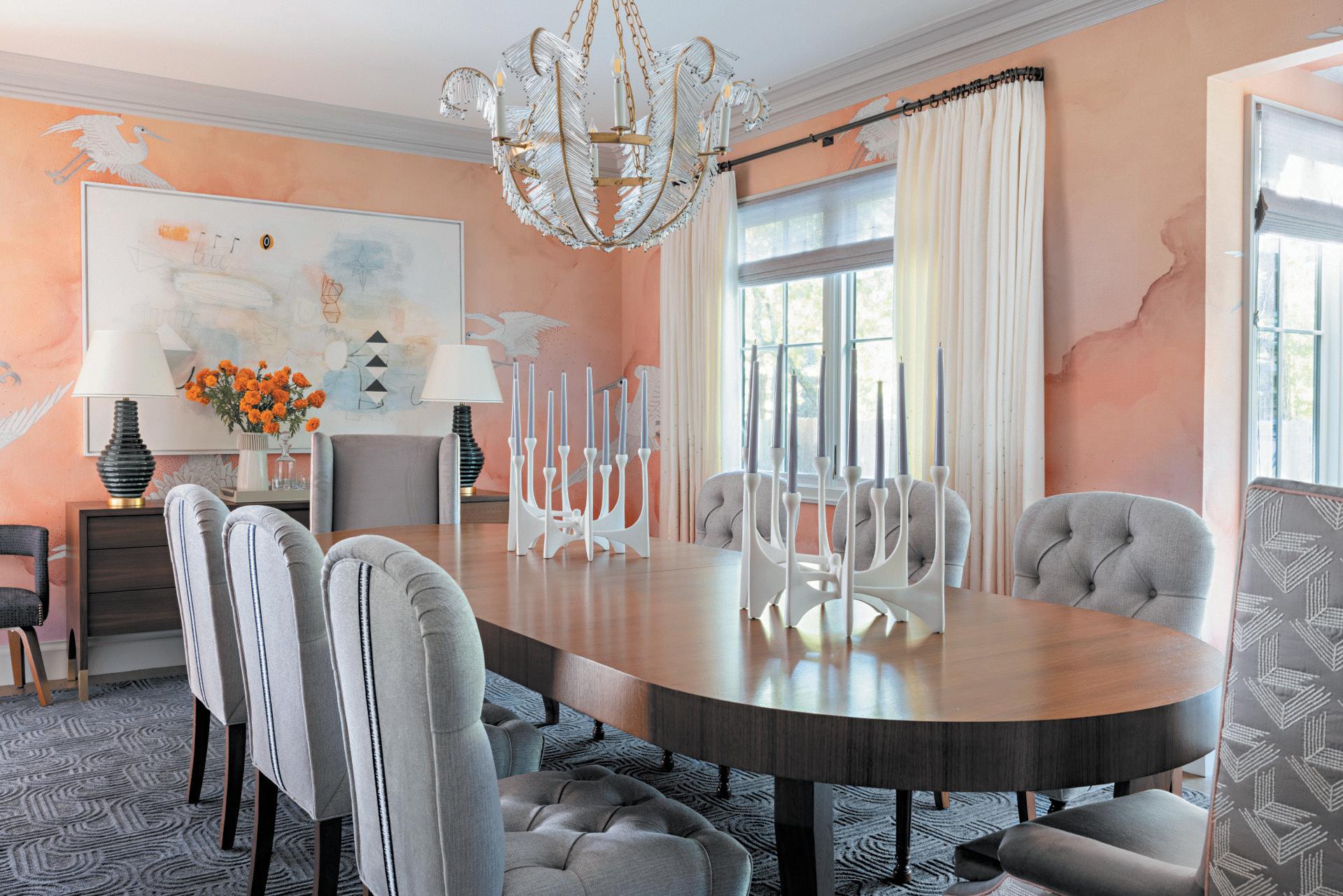
(Continued from Page 7)
He spent much of his youth building decks with his father and uncle. It was hard, arduous work. While in New York, he used those skills to apprentice with a carpenter making furniture and cabinets. “My first real patron was my friend’s mother, who had a large compound in Montauk and sent me to work out there. ‘Build everything,’ she said. ‘Cabinets, furniture, everything.’ It showed me my skill set was valuable.”
One night in Los Angeles David was hanging out at his brother’s bar, Alma’s Cider and Beer, on Virgil Avenue, where he was introduced to Matthew Janowicz, a master craftsman from Wisconsin.
Janowicz worked for over 25 years at “the Pabst Mansion and the oldest, grandest

SEATING MADE FROM a log washed ashore in Alaska.
houses in Milwaukee. [It was] carpentry with the extremely high standards of the Gilded Age,” he says. His young spirit took him to Ketchikan, Alaska, where his woodworking focused on refining materials found and inspired by nature—think a giant log found on the beach made into one solid table or seat.
David convinced Janowicz to


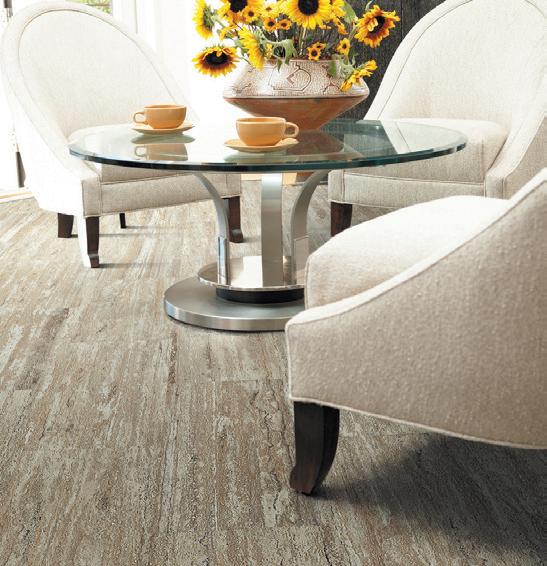

start a new endeavor with him here in L.A. “Matthew taught me how to make woodworking into an art form,” David says. “Each house has its own language. Sometimes we walk into an amazing house where they need a new kitchen and the house already has its own voice. That’s when we see ‘this’ is what the house needs.”
The “this” is the magic David and Janowicz create. It’s a team effort involving the client, sometimes an interior designer and David and Janowicz. Janowicz says, “We might get a mood board and we help them create a
design—[with] wood, metal, glass, even plastic.” David says, “It’s a big group project, and at the end of the day you get this heirloom piece of furniture”— or maybe a new kitchen.
Today I’m looking at matching mohair velvet couches; deep, but not too deep, elegant, with low backs, and with details and lines that somehow remind one of a tuxedo lapel from the 1930s. A true heirloom piece—something that took multiple artists to bring to life and sits nicely in this Neff house.
Not surprisingly, David and Janowicz find most cli-
ents word-of-mouth and have worked on multiple homes in Hancock Park, Beverly Hills, Malibu, West Hollywood and other areas. Nothing makes their team (all in their 20s other than Janowicz) happier than “Wine and Cheese sandwiches!” (Larchmont Village Wine, Spirits & Cheese, to you and me). David says, “We do this because we love it. If it’s not going to be fun and creative then we know we should be doing something else.” See their work at @matthewalexanderdesign on Instagram. Contact them at info@matthewalexanderla.com.


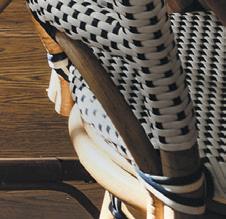
By Nona Sue Friedman
You know a home has been staged as soon as you walk in—the furniture is showroom clean, the entire home is harmonious in color and tone and there is rarely a clue of who actually lives in the house. Lisa Friedman believes that’s the sign of a well-staged home. Friedman works in client relations at Everything Creative Design (ECD) Los

on
Angeles, a staging company.
She pulled back the curtain and revealed how the staging industry presents a home. If it’s done well, prospective buyers want to take their time and walk through the entire home. Unlike interior designers, a stager’s goal is to appeal to a large audience and not one person’s taste.
“A stager sets the tone [of the home] and makes it welcoming but not homey,” says Friedman. They create an aesthetically pleasing atmosphere that is on point with current design trends. They want potential buyers to envision themselves living there. Did you want a coffee bar at home?
The stager thought you might.
Companies also need to mask any imperfections in the floor plan. That awk-
ward landing at the top of the stairs? Now it’s a dog’s hangout, complete with a bed and food and water bowls. The bedroom that’s not quite big enough for bed? It’s a meditation and yoga studio.
ECD, which specializes in up-to-date and luxurious design, brings everything to the home. This includes big necessities, like sofas, beds and light fixtures, but also includes decor and other details, such as coffee table books, throws and spa-like products for the bathroom. They move all the furniture in and transform the space within a few hours.
“We work together with the realtor and homeowner. Good realtors know they need a good stager. Staged homes sell faster and for more mon-

By Nona Sue Friedman
Twelve magnificent oversized photographs, each approximately 5 by 7 feet, grace the halls of the newest exhibition space at the Natural History Museum Commons. The exhibit, “Collective Knowledge from Our Changing World,” has specimens from the museum’s collections, which include 35 million items stored in their back rooms. Natural Geographic photographer Craig Cutler and creative director Scott Bremmer were hired to explore the collection and share their findings.
At a question and answer period at a recent opening reception, Bremmer said with a slight chuckle, “We did not look at all 35 million items before making our selection. We saw things that no one else could see, some of the most special things in the museum and its collection. I felt like a kid in a candy store.”
Along with the photographs, the team created a five-minute video of stationary objects that through light and camera movement were viewed as anything but static.
The video is continually streaming at the far end of the gallery.
The exhibit is on display at the museum, 900 Exposition Blvd., for the foreseeable future.

staged living room makes this home more appealing.
ey [than vacant homes],” says Friedman. This information about home sales is backed up by both the National Association of Realtors and the Real Estate Stagers Association. Friedman loves her job. “I

get such a charge when a home sells quickly and especially like it when the buyer wants to buy some of the pieces used for the project.” For more information, visit ecdlosangeles.com.



(Continued from Sec. 1, P. 1)
the entire house and another might ask for an entire room to be redone to the last detail.
The sisters use bold color palettes and patterns to cre-
ate distinct atmospheres and embrace the more traditional idea of separating rooms in a house. Elizabeth Wilson says, “A thoughtful palette can elevate a space from simple to unforgettable. We’ve always admired the bold use of col-
or and pattern in traditional English interiors. After a decade dominated by neutrals, we’re thrilled by the revival of maximalism—vibrant, layered spaces full of personality and depth. Whether through wallpaper, paint or textiles, color is




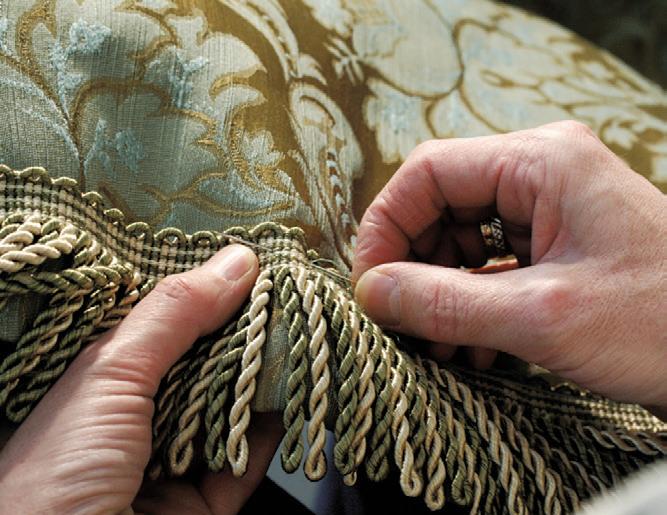
transformative. It brings individuality to a space and invites our clients to tell their story through design.”
Maybe you remember Los Angeles before the 1990s, in the era of grand homes throughout Beverly Hills, Westwood and especially Hancock Park. Rooms had personality and were separate, each with its own experience of wallpaper, animal prints, texture and grandeur. A sunroom might be Pierre Deux, a powder room a trip to Africa or a master bathroom (also mini beauty salon with glamorous seated hair dryers and vanity lights) copiously full of chinoiserie design.
Trends shifted as beige and tan seemed to fill most home interiors. Devon and Elizabeth remember one significant conversation they had after Devon had spent an evening at a Brentwood home valued around $20 million, “Elizabeth asked me, ‘What was it like?’ After a moment I said, ‘I can’t tell you anything!’ It was endless tans, beiges and greys.”
In the same vein,common space became rooted in the open floor plan starting in the 1950s, becoming fully embraced by the 1990s. That means one space for kitchen, living and entertaining. Unless you work with the Wilson sisters, that is.
Elizabeth says, “The pandemic definitely accelerated the shift away from open floor plans. With entire families suddenly working, studying and living at home around the clock, the need for privacy and personal space became undeniable. We’ve found that separate rooms allow for a more functional way of living, offering connection and retreat. From a design perspective, open-concept spaces can actually be quite limiting. When there’s no clear delineation between the kitchen, living and dining areas, and everything has to match. It flattens the design. We love working with individual rooms because it gives us the freedom to make each space feel unique. It opens the door to play with different palettes, patterns and moods, all while creating a cohesive story throughout the home.”
The sisters naturally fell into this career following their mother, Betty Wilson, a resident of Windsor Boulevard who had decided to return to design school in Connecticut when her children were young. Devon Wilson Dentler, who resides on Irving Boulevard says, “There were fabric swatches everywhere—we were always redoing a room!”
While the Wilson sisters might remind you how much you love to travel by bringing Morocco to an intimate room

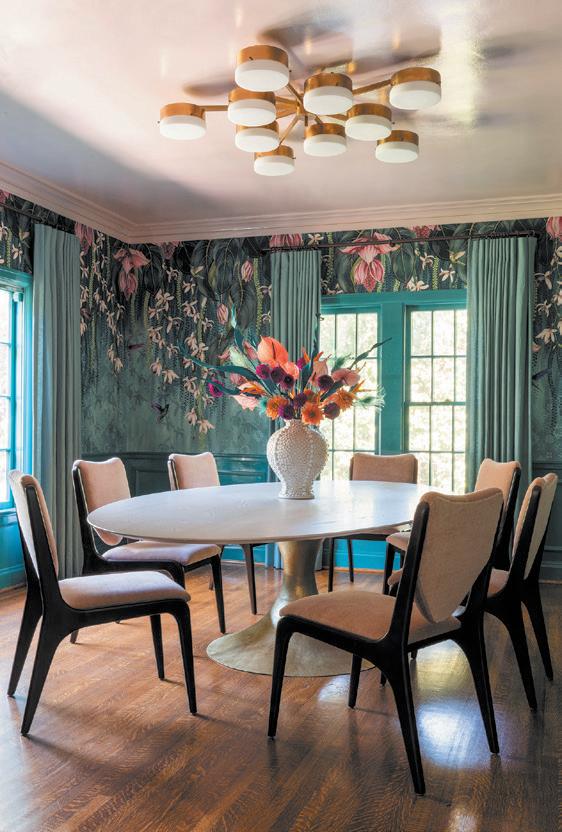

of your home, or by using wallpaper to make you feel as if you are dining in a magic garden, they are actually headed to the real Caribbean island of Nevis to work on the redesign of Montpelier Estate, a 17-room boutique hotel with a rich history dating back to 1687. Elizabeth said, “We’ve just entered Phase One, which focuses on reimagining the guest rooms, set to be completed in time for the hotel’s seasonal reopening in October. Phase Two will follow in 2026 and will center around revitalizing the communal spaces, including the great room, dining areas and pool, with the goal of honoring the estate’s heritage while bringing a fresh, thoughtful perspective to island hospitality.”
See their work at wilsonstudiola.com and on instagram @wilsonstudiola, or contact info@wilsonstudiola.com.
By Nona Sue Friedman
With colorfully designed tiles covering many of the buildings, winding cobblestone streets, loads of handmade crafts, water views, ancient churches and castles, old time trolleys and an entire population who take the time to appreciate vistas, especially at sunset, Portugal is a great place to visit. What a treat Portugal held for my family and me. We spent eight days there at the end of March.
Our adventure began in Lisbon with a motorcycle and sidecar city tour. It was a wonderful introduction to the area. And so much fun! Feeling the cobblestone bumps as we swerved through the seven hills of the city was a thrill. The motorcycle drivers gave us wonderful insight to many of the locations we passed, both in the hills and along the Tagus River, where Lisbon is situated. They also led us to a terrific view of St. George Castle, with the 25th of April Bridge in the distance.
Before leaving for Portugal, my research yielded that the country has a sweet tooth they are proud of. It seemed each area and even many cities have their own dessert specialty. My kind of country.
The famous one for Lisbon is pastéis de nata, and it is all over the city. It was originally created with leftover yolks after the egg whites were used to starch the habits of monks and nuns at the Jerónimos Monastery in Belém. The monastery is one of the top 10 sites to see in Lisbon.
When you visit Belém, about a 20-minute trolley ride west from central Lisbon, and you see the incredibly large monastery, you begin to understand why they had to do something with all those yolks. The place must be the size of two city blocks, and it took 100 years to build.
Of course we indulged in a pastry treat, or four. And to be honest, they are best at Antiga Confeitaria de Belém, where they originated. Here they are warm, with a crisp buttery crust and soft sweet center covered in powdered sugar and cinnamon. Yum!
Another highlight of Lisbon was venturing below its surface. In the 1990s, Millennium BCP Bank was doing construction on their building on Rue Augusta, the main walking street, when a crew found ancient Roman artifacts. This began an archeological dig that revealed an intact male skeleton from around 500 A.D., along with insight into what life was like in the area as far back as 2,500 years ago. The dig became part of
a museum that hosts a free archeologist-led tour, which we took. We went down to the underground sites, which was fascinating.
Porto is the second largest city in Portugal, and it’s also situated on water. There, we experienced a variety of modes of transportation—a riverside trolley, the famous gondola across the river from Porto, and a deceptively steep funicular, all very creative ways to get around this city’s steep terrain.
The biggest surprise of this city was visiting Serralves, a modern art museum, and its grounds. This visit was inspired by one of my daughters, a Wes Anderson fan, who found out there was a building on the museum grounds that emulated the film director’s distinctive and quirky style.
The museum’s exhibits were a bit strange for our taste but the grounds were incredible. We visited the interior of the Wes Anderson-style home and walked its formal garden. This led us to a farm with cows and sheep, a rose and camellia garden and a pond area that looked like the one from Monet’s home in Giverny, outside of Paris. But best of all was the tree-top walkway—a wooden boardwalk about 25 feet above ground where you are literally walking through the tops of trees and taking in views of this parkland. What a treat.
Conversations our family had before our trip made Portugal seem very similar to California, but we didn’t find that to be the case. We thoroughly enjoyed adventuring there.





By Helene Seifer
There are over 340 million people in the United States and they all need clothes, but the traditional method of purchasing body coverings has waned. Fewer and fewer people are frequenting department stores and boutiques, causing establishments to declare bankruptcy or close altogether. Macy’s, for example, was established in 1858, making it the oldest American department store
still in operation, but it is in the process of closing 150 of its stores (30%) by the end of the 2026 fiscal year. The pandemic is partly to blame. The convenience of ordering online with the click of a mouse, often from Amazon, is another factor.
There are new and unique ways to get our fashion fixes, including try-to-buy clothing subscription services, many of which have stylists on staff to customize fashion boxes

based on a client’s completed questionnaire. Stitch Fix is one of them.
“What I like about Stitch Fix is there’s someone on the other end who says ‘I think this is good for you,’” says Lisha Yakub Sevanian, a subscriber since 2017, who lives near Larchmont Boulevard. The independent filmmaker and mother of two young children explains, “They send a box with five things. Most of the time I like all five. Once they sent teal jeans that I never would have picked out on my own, but I could try it on with the stuff I have at home, and it worked!” Founded in 2011, Stitch Fix has a reported 2.3 million subscribers. They charge a $20 style fee for each box, plus the cost of any clothes kept.
Other purchase-oriented subscription boxes are tailored to specific interests or body types. Plus-size? Dia & Co has you covered. Petite? Short Story caters to the height-challenged. Gym-rat? Try Fabletics. Should we mention unmentionables? Elite by Adore Me will arrange monthly lingerie deliveries. There’s Menlo Club for men and Kidpiks for children.
Clothing rentals
The average person has 26 pieces of clothing in their closet that they never wear, so why watch your clothing investments go out of style or fail


to work the way you hoped?
Rental subscriptions, where you select which items you want to rent for a month, such as Rent the Runway, have proliferated for just that reason.
“I didn’t know how to dress after COVID,” says visual marketing professional Ann Griffith. “I felt like my size had changed. I knew I was going to dress differently when I went back to the office and I didn’t have the clothes I would need.”
She appreciated that the community of subscribers at Rent the Runway wrote detailed reviews that helped Griffith learn what worked for her. “I could sort [their inventory] by body type and found really good everyday dresses I could wear for work or to lunch at the Ebell [of Los Angeles.]”
Established in 2009, Rent the Runway’s 174,000 subscribers can sign up for five, 10 or 20 items per month, starting at $94 per box.
Nuuly is another rental subscription option. Owned by URBN, the parent company of Anthropology, Free People and Urban Outfitters, they carry roughly 19,000 styles, many from their own brands, although they repre-

sent over 400 designer and contemporary labels. Nuuly’s 300,000 subscribers pay $98 to rent six items a month that they select themselves. Clothing can be purchased for a separate variable fee.
“I’ve been using Nuuly since the beginning of the pandemic,” says actress Andriana Manfredi (whose latest film, “Crossroads,” began streaming at the end of March).
“Nuuly has all the brands I really like. I love clothes, but I am a frugal person and don’t feel good buying a jacket for $300. I bought a jacket from Nuuly for $80 [after renting it and liking it]. Brand new it would probably be $300.” Manfredi has a lot of social engagements and doesn’t want to repeat outfits. “I like to get dressed in more expensive clothes and then give them back. It’s good for the environment. I don’t love fast fashion. This is more sustainable.”
Beverly Grove resident Christy Brooks Fey agrees that sustainability is one of the plusses of her Nuuly subscription, explaining, “I don’t want to feed the machine of mass-produced clothes.”
(Please turn to Page 13)




(Continued from Page 12)
Brooks Fey often rents trendy pieces to add to her classic wardrobe. “It’s fun to try things [for the month’s rental] I wouldn’t normally try rather than purchasing it forever.” She also likes to rent pieces she would consider buying. “I have a pair of Levi’s right now from them that I will probably buy. They are in great condition and fit perfectly. I can buy it from Nuuly for 30% less than what I’d get it for at retail—$80 versus over $100.”
Clothing tips
Another way to add new pieces while addressing fashion waste is to recycle abandoned clothes we harbor by hosting a fashion swap party. At this trending sustainable event, friends and friends of friends gather around nibbles, wine and piles of clothes emptied from their closets that are looking for new homes.
Vanessa Diaz has been participating in clothing swaps for three years. It reminds her of the charitable mindset of recycling clothes she learned as a child, stating, “I grew up near the Mexican border and always gave away my clothes. My mother would bring them across the border [for those in need].” The public relations professional particularly enjoys the camaraderie of the swap parties and knowing that clothes get another life. “I work from home, so I give away blazers. The best thing I got was a Stella McCartney dress.”
Emily Getoff has been clothes-swapping since college. Now married, she hosts swaps twice a year in her Mid-Wilshire home. At her parties, participants share stories about the clothes they are donating, which makes acquiring them even more
meaningful, adding, “A friend brought a dress she had once worn at her rehearsal dinner. It makes it feel special.”
At her last event, the political consultant hosted 35 people. She says, “On average each person left with three to ten items.” Getoff is mindful of opportunities to do something philanthropic, so she donates whatever is left over. She brought approximately 15 bags of clothing to the nonprofit TransLatin@ Coalition.
The next time you look in your closet and think, “I have nothing to wear,” consider
clothing swaps and subscription boxes. With apologies to Mark Twain, “Clothes make the woman. Naked people have little or no influence in society.”
Put some spring in your step with a stroll from Larchmont Boulevard to Marciano Art Foundation on Wilshire Boulevard on Sat., May 10, beginning at 1 p.m.
The Marciano Art Foundation Walk + Performance includes a look inside the former Scottish Rite Masonic Temple and the temporary multimedia work on view there, “Lightscape,” by artist Doug Aitken. Konkrete &
Friends, a collective of dancers, will perform.
The event is part of SideWalking.org, hosted by Windsor Square resident Marcelo Ziperovich. Free entrance is included with the walk, but space is limited. Location of the Larchmont departure will be sent after booking. RSVP for the walk at sidewalking.org. Sign up for future walks and events at whatsup@sidewalking.org.


By Nancy Redford
On a recent spring day I drove north along Highway 14 toward the Angeles National Forest to “Wander with the Wolves.” I wanted to “see the world through the eyes of a wolf,” so an invitation to join a 2.5-hour tour in mountain air was irresistible.
I arrived at the sprawling 165-acre Wolf Heart Ranchalong with a dozen others armed with water, sunblock and cameras. Since 2009, the nonprofit Wolf Connection has sheltered, medically cared for and rehabilitated 91 wolves and wolf dogs rescued from illegal exotic animal breeding, neglect and abuse. These animals have been born in captivity without the skills to survive in the wild, and yet most cannot conform to domesticity.

of refuge,” she says as we walk toward the wolf dens. “Everyone who comes here experiences a deep connection with these animals.” And almost on cue a chorus of wolf howls fills the air, over 47 creatures in unison.
worth and live cooperatively. Wolves adapt roles for the greater good of the pack: trackers, nannies, hunters, omegas, betas or alphas. Contrary to folklore, a lone wolf is a dead wolf. They instinctually live in a pack for safety, greater health and a sustainable existence. Here at Wolf Connection we believe this is a crucial and timely lesson for humanity.” To learn more visit wolfconnnection.org.

by Nancy Redford
Animal control agencies consider these animals dangerous and are required to euthanize them within three days unless a sanctuary rescues them. Just as important to their mission, the Wolf Connection provides immersive programs for visitors to experience a kinship with these animals and to unlearn the pathology of fear and hate that results in the eradication of so-called “big, bad wolves.” In truth, wolves are conflict-avoidant, highly intelligent, socially interdependent pack animals with a crucial role in wildlife ecosystems. Our guide is Laurie Cousins. She joined Wolf Connection seven years ago. “It’s my place
Our group gathers seated in a circle. Some are lifelong wolf lovers, others simply curious. Cousins walks wolf Wynter on a leash and slowly circles our group. We get our first touch of the thick mane and a look into her amber eyes, and feel a primal symbiosis. We move into a spacious gated corral where the animals are housed in separate habitats. Some wolves rest, others pace curiously forward for a look at us while we learn their backstories. Cousins leads Neo and we hike alongside through the chaparral. At a clearing we are asked to take a seat on the ground to seem less dominating and make it easier for him to meet us. There is a palpable emotionality to having a wolf encounter, and I felt honored to have gotten a wolf “kiss”—a gentle tap of his muzzle on my hand.
Back at the gathering circle we listen to each other’s experience: magical, transformational, awesome. “These wolves are champions of resilience,” Cousins tells us. “As you saw, they are not their traum. They know their own

ACROSS
4. Leather for vegans
8. Style clean and unadorned look
9. 191 S. Hudson Ave. design
12. Symbol of hospitality
14. Minimal use of water in garden
16. Small scented collection
17. Mayor’s House and museum
19. For the mother-in-law
DOWN
1. F.L. _______ organic architect
2. Show-mid-century modern design
3. Wilton Historic District
homes
5. European imitation of Asian style
6. Window for enjoying ocean
7. British architectural style
10. Chairs from the show above
11. Pierre _______ French country style
13. Harmonize your space
15. Persian rugs need a lot of these
18. Landscape rule of _______
ANSWERS: Please turn to page 6. Answers will also be on our online edition in early May.

If you were to present a preschooler—whose idea of good eating is mac and cheese fresh from the box—with a perfect béchamel, the fine-tuned roux and notes of nutmeg in the French “mother sauce” would likely be drowned out amid a world of louder, brighter distractions. No shade to the under-10 set (especially as a Kraft kid myself), but one might say you had “cast pearls before swine.”
Consider a “pearl”—the lustrous mass born from the soft tissue of various mollusks and exalted to the pantheon of precious gemstones. “Swine,” like other terms referring to mammals of the Suidae family, is demoted to the station of insult. That word dates back to the Old English period (pre-1150), while the earliest evidence for “pearl” in the English language doesn’t appear until 1340. “Swine before pearls” is more like it.
And which came first? The “chicken” or the “egg”? The word for the mature form of this fowl wins out by a few hundred years, arriving during the Old English period from the Proto-Germanic root “keuk-,” a word imitative of its telltale call. Thankfully, “chicken” has been here long enough that we can easily count how many there are before they “hatch” — a word whose first surviving mention
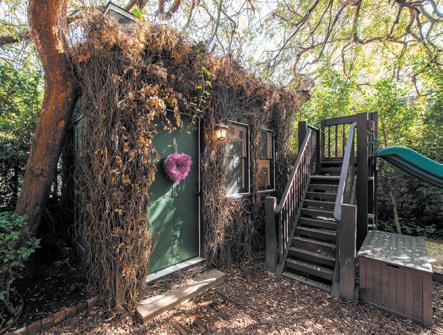
is in the verses of “The Owl and the Nightingale,” a poem from the 12th or 13th century written in Middle English. Was there always a “calm” before the “storm”? While the latter arrived in our lexicon earlier, during the Old English period, “calm” was specifically used to describe the sea—and not a state of mind—when it first appeared in the English-Latin bilingual dictionary “Promptorium Parvulorum” in 1440. “Calm” is thought to have originated from the Late Latin “cauma,” meaning “heat of the midday sun,” in reference to the hour when the Mediterranean waters surrounding Italy were most placid. “Cauma” was influenced by “calere” (“to be hot”), which is also the antecedent of “cauldron,” “calorie”—a unit of heat—and “caliente,” the word for “hot” in Spanish. Do you believe in “life” after “love”? Core to the human experience—and the English language—both words date back to the Old English era, with “life” evolving from the Proto-Indo-European (4500-2500 B.C.) root “leip-,” meaning “to stick or adhere.”
While we often try to approach tasks using a rational order, being sure not to put the “cart” before the “horse,” the truth is the animal came first and so did the word used



to describe it. “Horse” dates back to an illuminated Anglo-Saxon Psalter from the middle of the 8th century, while “cart” doesn’t show up in dictionaries until the early 13th century, originating from the Old Norse “kartr.” Common sense be damned.
The “bird” that gets the treasured worm is indeed early, appearing in its Old English form, “bridd,” in the West-Saxon Gospels, published in
Larchmont Chronicle May 2016
A bridge column would be a nice idea as well as games like crosswords and sudoku. Specific to bridge, it would be difficult for me to follow along since I do not know how to play the game. It might be nice for a Chronicle sponsored bridge club for beginners. Perhaps participants would be willing to host in their homes as a potluck or pass the expense on to the newly formed bridge club. It is a social game and could be a good niche for the paper to convene such a group.
Bill Ahmanson Hancock Park
England in the year 990. The prize for this early riser also received its name during the same era, appearing in the epic poem “Beowulf,” written by an unknown author sometime between 700 and 1000 A.D. “Worm” wriggled its way to its current form from the Old English “wurm,” itself derived from the Proto-Germanic “wurmiz,” which traces back to the Proto-Indo-Eu-
ropean “wer,” meaning “to turn or bend.” The wandering words “divert,” “vertex,” “converse” and even “weird” arrive from the same root.
While the origins of words would have us put the “horse” before the “cart” and be wary of the “storm” before the “calm,” our best idioms are those which are handiest— day after day and season after season.


